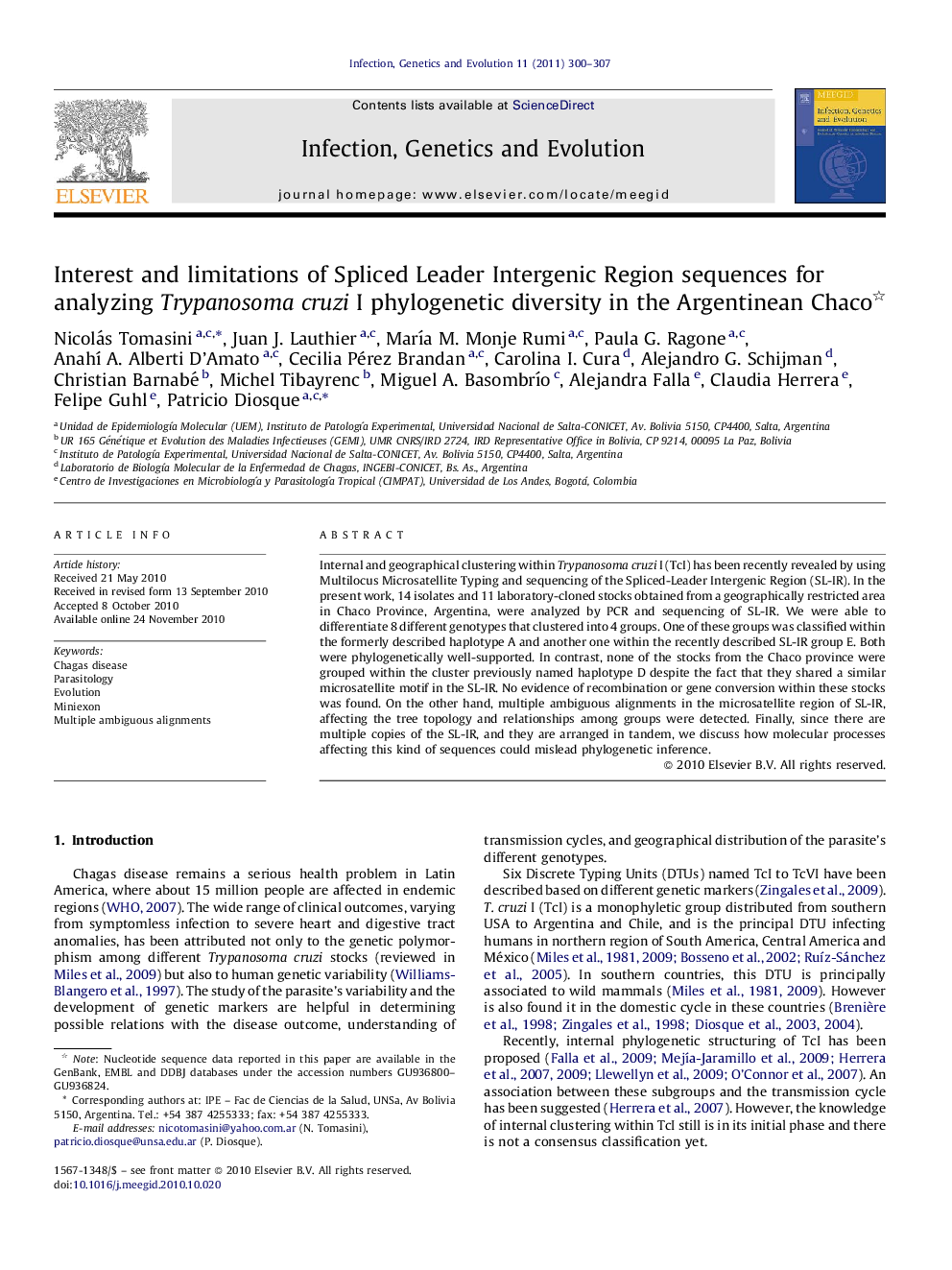| کد مقاله | کد نشریه | سال انتشار | مقاله انگلیسی | نسخه تمام متن |
|---|---|---|---|---|
| 5911849 | 1161373 | 2011 | 8 صفحه PDF | دانلود رایگان |

Internal and geographical clustering within Trypanosoma cruzi I (TcI) has been recently revealed by using Multilocus Microsatellite Typing and sequencing of the Spliced-Leader Intergenic Region (SL-IR). In the present work, 14 isolates and 11 laboratory-cloned stocks obtained from a geographically restricted area in Chaco Province, Argentina, were analyzed by PCR and sequencing of SL-IR. We were able to differentiate 8 different genotypes that clustered into 4 groups. One of these groups was classified within the formerly described haplotype A and another one within the recently described SL-IR group E. Both were phylogenetically well-supported. In contrast, none of the stocks from the Chaco province were grouped within the cluster previously named haplotype D despite the fact that they shared a similar microsatellite motif in the SL-IR. No evidence of recombination or gene conversion within these stocks was found. On the other hand, multiple ambiguous alignments in the microsatellite region of SL-IR, affecting the tree topology and relationships among groups were detected. Finally, since there are multiple copies of the SL-IR, and they are arranged in tandem, we discuss how molecular processes affecting this kind of sequences could mislead phylogenetic inference.
ⶠWe analyzed the SL-IR sequence of 25 stocks of Trypanosoma cruzi from Chaco Province, Argentina. ⶠEight genotypes clustered into 4 groups, two did not cluster with any of previously described. ⶠAmbiguous alignments in the microsatellite region produce contradictory phylogenetic signals. ⶠWe discuss possible bias in phylogenetic inference of this region.
Journal: Infection, Genetics and Evolution - Volume 11, Issue 2, March 2011, Pages 300-307